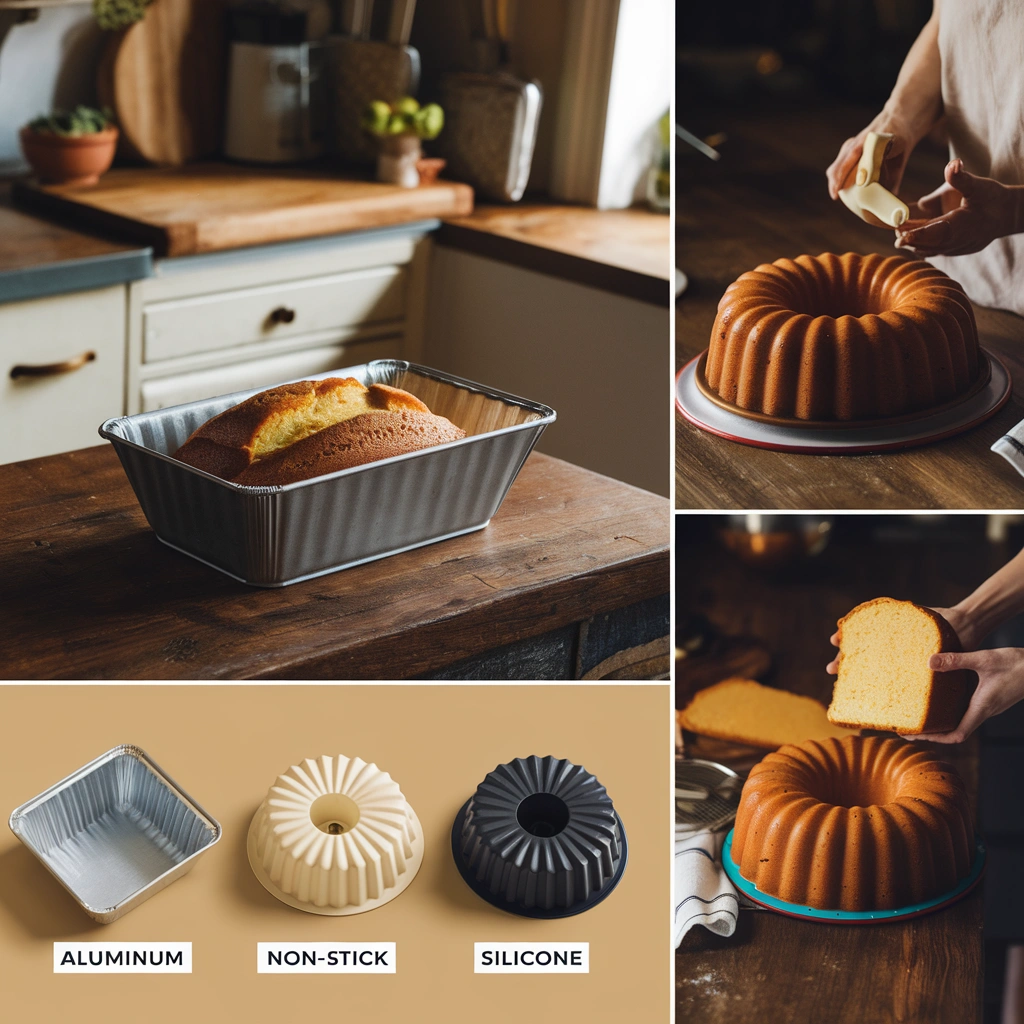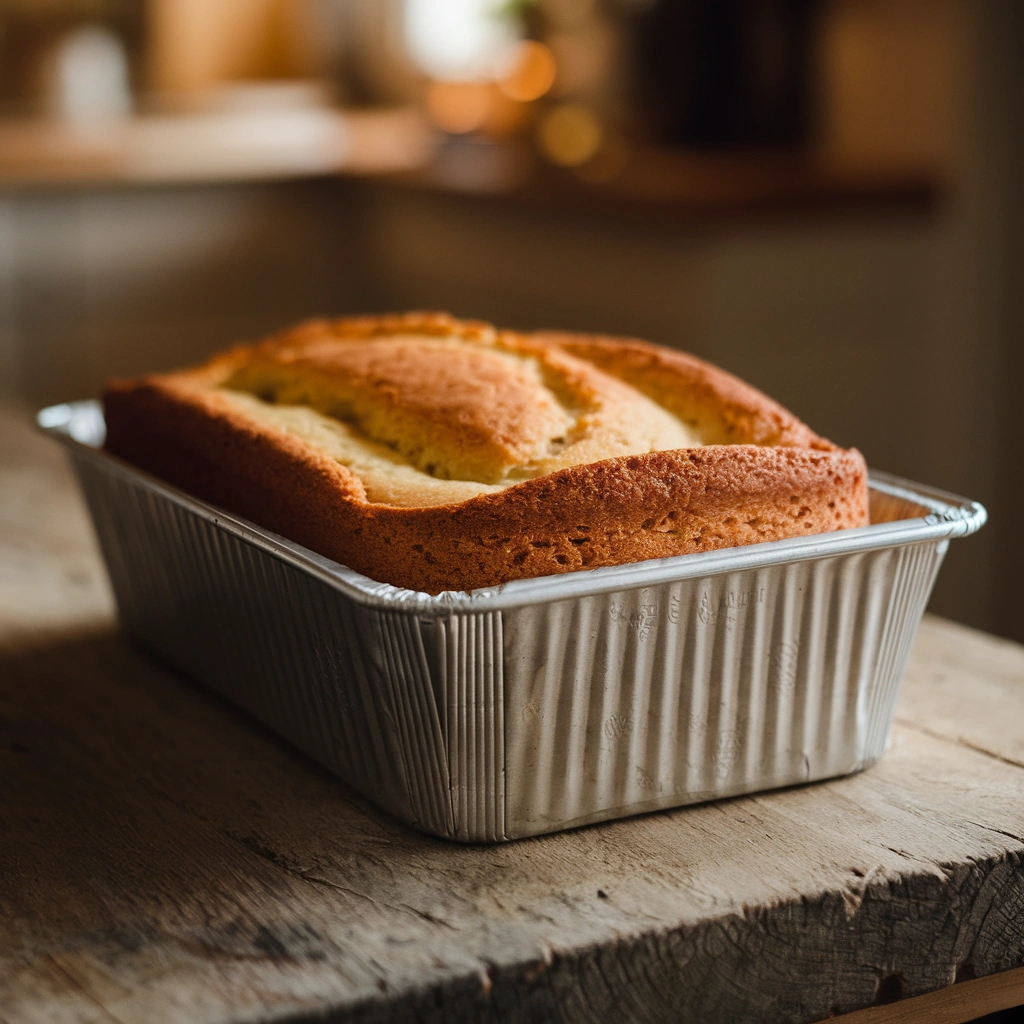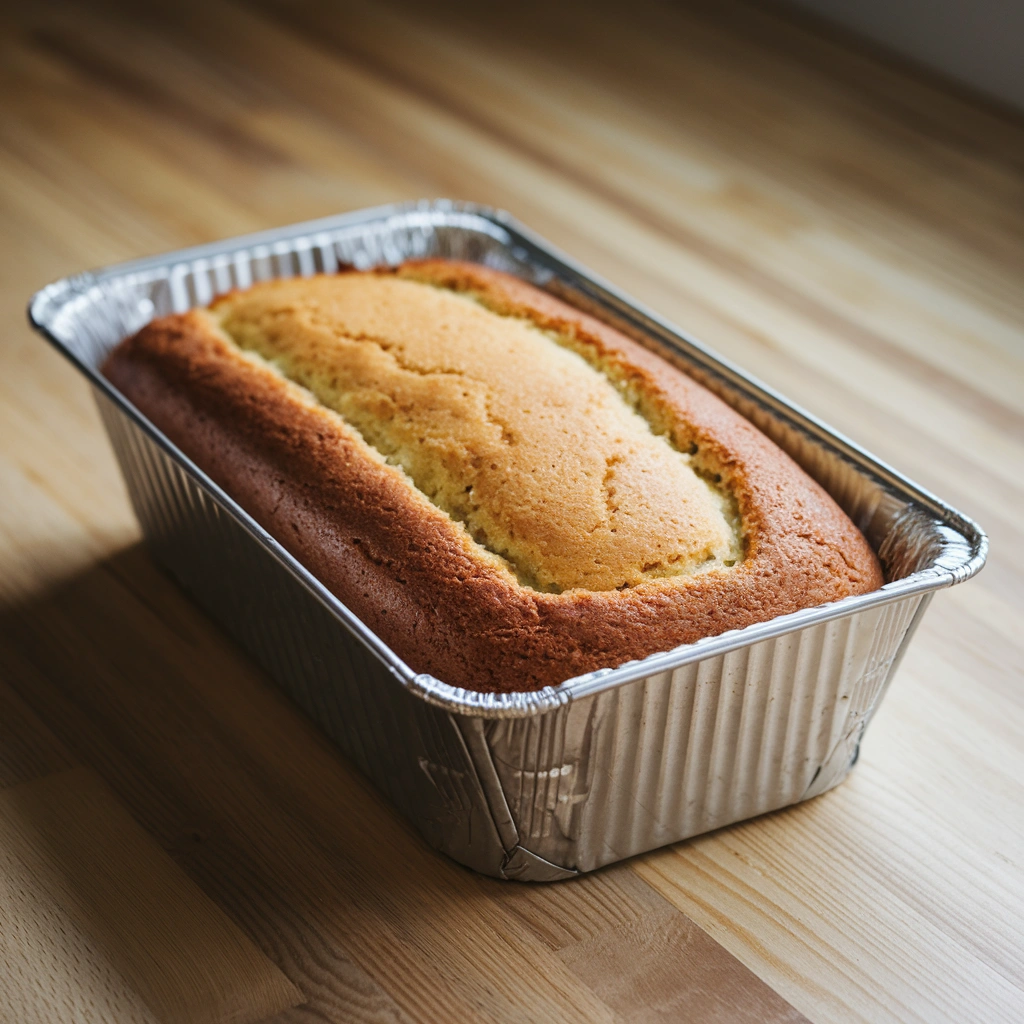Baking the perfect pound cake starts with choosing the right pan. From the material and size to how well it’s prepared, the pan plays a critical role in achieving a cake with a golden crust, even texture, and moist crumb. If you’ve ever struggled with pound cakes that stick to the pan, bake unevenly, or turn out dry, the issue may lie in your choice of bakeware.
To learn more about choosing the best pound cake pan for your bake, check out our Ultimate Guide on Pound Cake Pan Perfection. This guide goes deeper into pan materials and how each affects your pound cake’s texture.
In this post, we’ll share expert techniques to help you choose the perfect pound cake pan, prevent common baking issues, and bake like a pro every time! For more expert baking advice, visit Serious Eats’ Guide to Best Cake Pans, where they break down the top bakeware choices for every baker.
Let’s get baking! 🍰✨
Choosing the Best Pound Cake Baking Pan
Aluminum, Non-Stick, or Cast Iron: Which is Best for Pound Cakes?
The material of your pound cake pan plays a significant role in ensuring even baking and achieving the perfect texture. Aluminum pans are ideal for pound cakes because they provide consistent, even heat distribution, preventing overcooked edges and raw centers. Non-stick pans are easy to use for a hassle-free release, but dark-coated versions can lead to excessive browning and uneven baking. For a slightly crispier crust, cast iron pans can give you that rich, golden texture, but they need proper preheating to avoid heat spots. The best all-around choice for most bakers is an aluminum pan due to its balance of heat distribution and texture results.
Loaf Pans vs. Bundt Pans: Which Should You Use?
The shape of your pan is just as important as its material when it comes to baking a perfect pound cake. Loaf pans are the traditional option and help achieve a uniform, dense cake. If you’re after a traditional pound cake with a smooth crumb and a structured shape, a loaf pan is perfect. On the other hand, Bundt pans are ideal for creating a visually striking cake. Their ringed shape allows heat to circulate more evenly, leading to better rises and even cooking. Bundt pans also help promote a softer, moist texture, but they can be tricky to release without proper greasing and flouring. For a more classic, uniform texture, go for a loaf pan; for a visually interesting cake with great texture, the Bundt pan is your best choice.
Choosing the Right Pan Size for Your Recipe
The size of your pan directly affects the outcome of your pound cake. Using a pan that’s too large can result in a flat cake, while a pan that’s too small may lead to overflowing batter. A standard 9×5-inch loaf pan is the go-to for most pound cake recipes. It holds about 8 cups of batter and bakes a traditional-sized pound cake. If your recipe calls for a larger or smaller batch, you’ll need to adjust accordingly. When using a Bundt pan, check the capacity—a 10-inch Bundt pan typically holds between 10-12 cups of batter. Always aim to fill your pan about two-thirds full to ensure proper rising without spillage.
Preparing Your Pound Cake Pan for a Flawless Bake

Greasing the Pan Like a Pro: Butter, Flour, or Spray?
Properly preparing your pound cake pan is key to ensuring the cake comes out easily and retains its texture. The most effective method is a combination of butter and flour. Start by generously buttering the entire pan, ensuring you coat every nook and cranny, especially in Bundt pans. Once the butter is applied, dust the pan with flour. This creates a barrier that prevents the cake from sticking. If you prefer an easier method, baking spray works well too, but it’s important to choose a spray that includes flour, as it helps coat the pan more evenly. This will result in a smooth, flawless release every time.
The Power of Parchment Paper for Easy Cake Removal
When it comes to pound cake, parchment paper is a game-changer. Especially in loaf pans, lining the pan with parchment paper guarantees that your cake won’t stick, regardless of how moist the batter is. The paper also helps you lift the cake out effortlessly after it cools. Simply cut a strip of parchment long enough to cover the bottom and sides, leaving “handles” that extend over the edges for easy removal. For Bundt pans, parchment is not typically necessary. Instead, focus on using baking spray or butter and flour to coat every crevice to prevent sticking.
Preventing Uneven Heat: Tips for Using Hot Spot-Free Bakeware
A common cause of uneven baking is hot spots in the oven, but choosing the right pan can help minimize this issue. If you find that one side of your cake is always darker than the other, it could be your oven’s hot spots causing the problem. One of the best ways to tackle this is by using an oven thermometer to ensure your oven is maintaining a consistent temperature. You can also reduce the impact of hot spots by rotating the pan halfway through baking to ensure even browning and rising. Placing your pan in the center rack can also help distribute the heat more evenly, ensuring the cake cooks evenly on all sides.
Mastering Pound Cake Baking Techniques
The Right Oven Temperature for Pound Cake Perfection
Temperature control is critical to baking a pound cake that is both moist and evenly baked. 325°F (163°C) is the ideal temperature for most pound cake recipes, as this slower, moderate heat ensures the cake rises without cracking or drying out. If your oven runs hot, it’s a good idea to reduce the temperature by 10-15°F to prevent overbaking. Oven thermostats can often be inaccurate, so double-check your oven’s true temperature for consistency throughout the baking process. Preheating the oven is just as important—never place your batter in a cold oven as it will cause uneven cooking.
Mixing Techniques to Avoid Dense or Crumbly Pound Cake
One of the most common causes of dense or crumbly pound cakes is improper mixing. Overmixing your batter can cause excess gluten to form, leading to a heavy and tough texture. To achieve a light, moist cake, use the creaming method. Beat your butter and sugar together until light and fluffy, ensuring that air is incorporated into the batter. Once you add the eggs, mix only until combined to avoid overworking the gluten. When adding dry ingredients, mix them in gently, just until the flour disappears. This prevents overmixing and ensures your cake remains airy and soft.
Avoiding Common Pound Cake Problems: Dryness, Cracks, and Sinking
A dry pound cake is often a result of overbaking or using too much flour. Overmixing, too, can lead to an overly dense cake. To keep your pound cake moist, monitor the baking time closely—use a toothpick test to check for doneness. If the toothpick comes out clean, the cake is ready. To avoid cracked tops, don’t overfill the pan and be sure to adjust oven temperature when needed. Sinking centers usually happen if the batter is too wet, or the pan is too small. For even, consistent results, always use the correct size pan and measure ingredients accurately.
Cooling, Unmolding, and Storing Your Pound Cake for Best Results

The Best Cooling Practices to Retain Moisture
Cooling is crucial to achieving the perfect texture in your pound cake. If you leave your cake in the pan for too long, moisture will be trapped and the bottom will become soggy. After baking, allow the cake to cool in the pan for 10-15 minutes before transferring it to a cooling rack. This short cooling period helps the cake set without becoming overly moist. If you’ve used a Bundt pan, invert it carefully onto the cooling rack to allow air to circulate and prevent moisture buildup.
Tips for Unmolding Cakes Without Breaking Them
Unmolding your pound cake too soon can lead to broken edges, especially in Bundt pans. If your cake seems to be stuck, tap the sides of the pan gently to loosen it. If it doesn’t budge, use a plastic knife to loosen the edges carefully. For a smooth release, wait until the cake has cooled slightly in the pan—about 10-15 minutes—before inverting. For Bundt cakes, using a warm towel around the pan for a few minutes can help loosen the cake without damaging it.
Storing Pound Cake to Keep It Fresh and Moist

After your cake has cooled, it’s important to store it properly to keep it moist. Avoid plastic wrap if possible, as it can trap too much moisture and make the cake soggy. Instead, use wax paper or parchment to wrap it loosely, or place it in an airtight container at room temperature for up to three days. For longer storage, slice and freeze your cake. Wrap individual slices in parchment paper before placing them in a freezer bag to prevent freezer burn.
Conclusion
Baking the perfect pound cake requires the right pan, proper preparation, and expert baking techniques. With the tips shared in this guide, you’ll be able to bake pound cakes that are moist, golden, and perfectly baked every time. By choosing the best pan, greasing it properly, and following expert advice on oven temperature and cooling, you’ll achieve pound cake magic that rivals professional results. Ready to bake like a pro? Get started and enjoy flawless pound cakes today!

